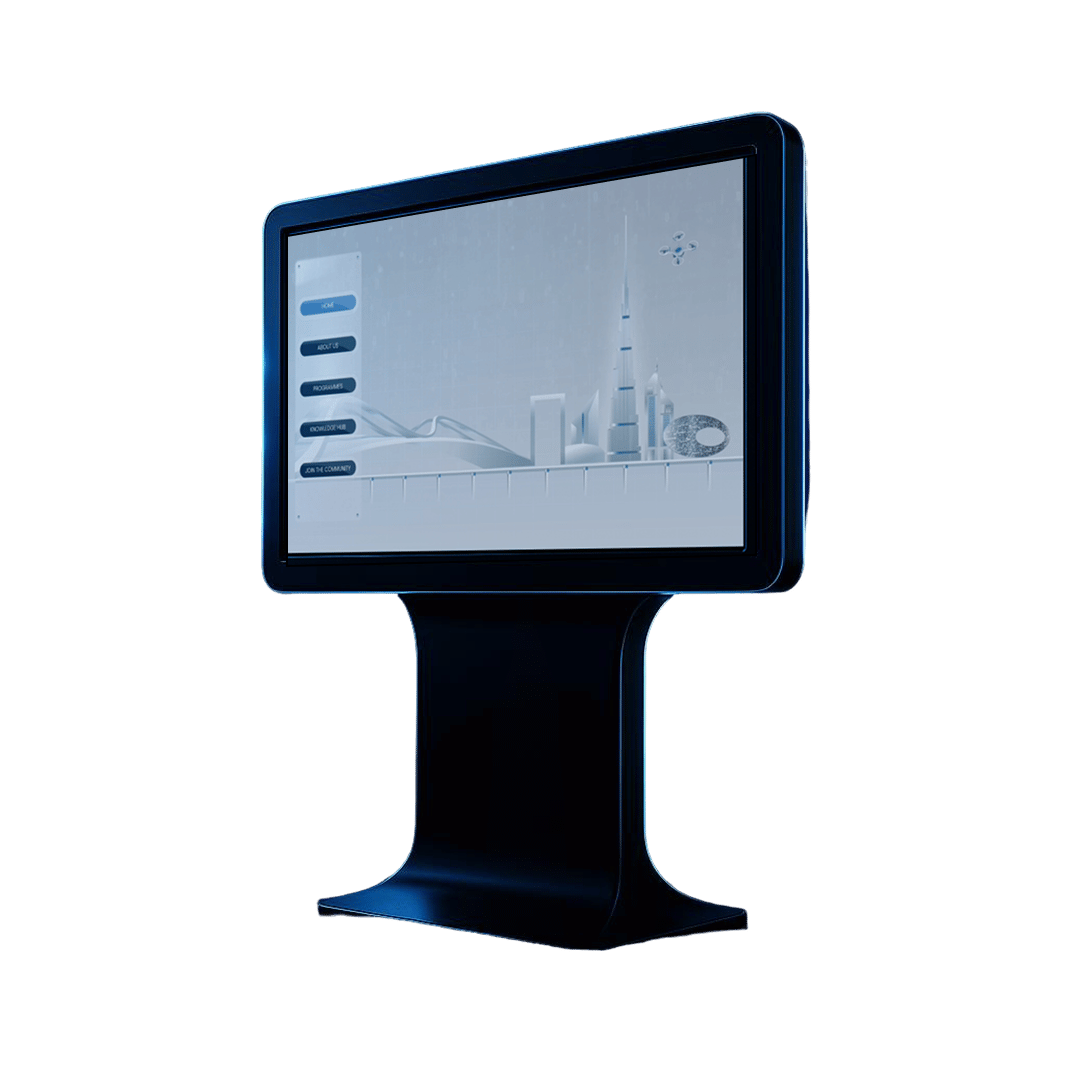

Looking back, thinking forward: 5 years of transformation in corporate communications

23 APR 2025
ver the past 5 years, corporate communications have undergone a fundamental transformation, shaped by evolving stakeholder expectations and ongoing, rapid advancements in technology.
O
Listen to this article - Augmentation X: Looking back, thinking forward: 5 years of transformation in corporate communications
Whether presenting strategy in the boardroom, reaching broader audiences through corporate publications, or introducing the organisation to prospective clients, technology and interactivity have become central to the communication experience. Yet, one constant remains: without a clear strategic foundation, even the most advanced tools fail to drive the intended communications objectives. Technology alone does not drive impact. Success lies in aligning digital capabilities with well-defined communication objectives.
As organisations continue to invest in new platforms and communication formats, 3 trends have emerged as defining forces in corporate communications: the rise of AI-generated content, the growing role of interactivity and motion in communication materials, and the emergence of immersive technologies such as AR, VR, and the metaverse. While each offers potential to enhance stakeholder engagement, their impact depends entirely on how they are applied - strategically, selectively, and with the end user in mind.

Article by
Mihaela Nina
Partner & Head of Product, Augmentation X

Over the past 5 years, corporate communications have undergone a fundamental transformation, shaped by evolving stakeholder expectations and ongoing, rapid advancements in technology.


AI has redefined the pace and scale at which content can be produced, with the landmark moment being the public release of ChatGPT in late 2022. Within 5 days, the platform attracted over 1 million users, and by January 2023, it had surpassed 100 million. This level of adoption marked a clear shift, as AI was no longer a forward-looking concept, but a present-day reality shaping how organisations produce, scale, and deliver content. Ever since, AI has redefined not only the pace of content production but also the range of formats through which organisations communicate. A new generation of tools now enables a quick development of written content, visuals, and video assets, many of which are increasingly being adopted across organisations.
Yet as adoption grows, so does the need for strategic oversight. While AI offers significant efficiency gains, its outputs often lack the strategic nuance, contextual awareness, and tone required to engage stakeholders meaningfully. The widespread use of AI-generated copy has contributed to a growing homogenisation of language across industries and platforms. Simply said, as more organisations adopt similar tools trained on the same publicly available data, the outputs tend to converge, resulting in messaging that is polished but increasingly the same. Key differentiators such as tone of voice, narrative structure, and brand personality risk being diluted or entirely lost. Over time, this uniformity undermines an organisation’s ability to stand out, diminishes the distinctiveness of its communications, and weakens stakeholder engagement.
What we have seen at Augmentation X is that our clients embrace AI tools primarily as accelerators, particularly for ideation and structuring of information. However, the strategic core of communications remains in the hands of experienced professionals. It is communication specialists and department heads who structure narratives, ensure contextual accuracy, and refine tone. Even AI-generated videos require strategic framing, built by those who understand the organisation’s history, priorities, and intended outcomes.
Ultimately, as with any tool, it is not the use of AI that drives impact, but how it is shaped, guided, and refined by those who understand both the message and the context in which it must land.

The rise of AI-generated content
01


AI has redefined the pace and scale at which content can be produced, with the landmark moment being the public release of ChatGPT in late 2022. Within 5 days, the platform attracted over 1 million users, and by January 2023, it had surpassed 100 million. This level of adoption marked a clear shift, as AI was no longer a forward-looking concept, but a present-day reality shaping how organisations produce, scale, and deliver content. Ever since, AI has redefined not only the pace of content production but also the range of formats through which organisations communicate. A new generation of tools now enables a quick development of written content, visuals, and video assets, many of which are increasingly being adopted across organisations.
Yet as adoption grows, so does the need for strategic oversight. While AI offers significant efficiency gains, its outputs often lack the strategic nuance, contextual awareness, and tone required to engage stakeholders meaningfully. The widespread use of AI-generated copy has contributed to a growing homogenisation of language across industries and platforms. Simply said, as more organisations adopt similar tools trained on the same publicly available data, the outputs tend to converge, resulting in messaging that is polished but increasingly the same. Key differentiators such as tone of voice, narrative structure, and brand personality risk being diluted or entirely lost. Over time, this uniformity undermines an organisation’s ability to stand out, diminishes the distinctiveness of its communications, and weakens stakeholder engagement.
What we have seen at Augmentation X is that our clients embrace AI tools primarily as accelerators, particularly for ideation and structuring of information. However, the strategic core of communications remains in the hands of experienced professionals. It is communication specialists and department heads who structure narratives, ensure contextual accuracy, and refine tone. Even AI-generated videos require strategic framing, built by those who understand the organisation’s history, priorities, and intended outcomes.
Ultimately, as with any tool, it is not the use of AI that drives impact, but how it is shaped, guided, and refined by those who understand both the message and the context in which it must land.
The rise of AI-generated content
01

A year before the rise of ChatGPT and gen-AI tools, in 2021, the metaverse captured global attention, promising to reinvent how businesses communicate and interact with their stakeholders. Virtual environments, 3D experiences, and immersive brand spaces offered a new frontier for engagement.
However, the gap between potential and practical adoption remains wide. While the technology itself has matured rapidly, business use cases remain limited in relevance for many organisations, as they have often lacked strategic clarity, scalability, or measurable ROI. In most industries, the practicality of metaverse-based communication is still constrained by infrastructure requirements, limited accessibility, and lack of stakeholder readiness.
That said, rather than being a mainstream solution, the metaverse has, for now, evolved into a niche tool, best leveraged in targeted, high-experience initiatives where immersive storytelling can truly enhance value. For example, some organisations have successfully used virtual showrooms and interactive 3D environments during events activations, pop-ups, and targeted campaigns.
At Augmentation X, what we have seen during the metaverse hype is a significant interest from clients in understanding the potential of the metaverse and 3D environments, particularly around use cases for stakeholder engagement. However, this curiosity was often met with hesitation due to the same constraints mentioned earlier. To attract external audiences, substantial marketing investment would be required without clear visibility on ROI. To engage internal stakeholders, infrastructure demands are high and sustained engagement is uncertain.
So indeed, while the metaverse sounded compelling at first, for the organisations we have been working with, the business case remains difficult to justify at scale.

The metaverse and the reality of adoption
02




A year before the rise of ChatGPT and gen-AI tools, in 2021, the metaverse captured global attention, promising to reinvent how businesses communicate and interact with their stakeholders. Virtual environments, 3D experiences, and immersive brand spaces offered a new frontier for engagement.
However, the gap between potential and practical adoption remains wide. While the technology itself has matured rapidly, business use cases remain limited in relevance for many organisations, as they have often lacked strategic clarity, scalability, or measurable ROI. In most industries, the practicality of metaverse-based communication is still constrained by infrastructure requirements, limited accessibility, and lack of stakeholder readiness.
That said, rather than being a mainstream solution, the metaverse has, for now, evolved into a niche tool, best leveraged in targeted, high-experience initiatives where immersive storytelling can truly enhance value. For example, some organisations have successfully used virtual showrooms and interactive 3D environments during events activations, pop-ups, and targeted campaigns.
At Augmentation X, what we have seen during the metaverse hype is a significant interest from clients in understanding the potential of the metaverse and 3D environments, particularly around use cases for stakeholder engagement. However, this curiosity was often met with hesitation due to the same constraints mentioned earlier. To attract external audiences, substantial marketing investment would be required without clear visibility on ROI. To engage internal stakeholders, infrastructure demands are high and sustained engagement is uncertain.
So indeed, while the metaverse sounded compelling at first, for the organisations we have been working with, the business case remains difficult to justify at scale.
The metaverse and the reality of adoption
02

There is absolutely no question on the fact that attention spans are getting shorter and shorter, particularly in executive environments where time is limited and the day-to-day operations load is high.
From strategy and sales to financial and company-wide presentations, from corporate publications to digital spaces, at Augmentation X we have seen that traditional, text-heavy materials simply no longer align with how today’s stakeholders consume information.
This is why, one of the most significant changes in corporate communications over the past 5 years has been the transition from static formats to dynamic, interactive experiences.
All our projects have shown that effective stakeholder engagement depends on 3 key principles: visual clarity, narrative structure, and experience design.
→ Complex data needs to be translated into visual formats that captivate the audience’s attention and enable a quick and easy understanding.
→ Messaging should be clear and aligned with the strategic priorities of the stakeholders it is intended for.
→ And lastly, for all communication materials that require stakeholders to explore them on their own, the delivery needs to evolve into an interactive, user-driven exploration.
When thoughtfully applied, motion and interactivity elevate communications from informational assets to strategic tools capable of capturing attention, shaping perception, and driving meaningful stakeholder engagement.
The shift towards motion and interactivity
03




There is absolutely no question on the fact that attention spans are getting shorter and shorter, particularly in executive environments where time is limited and the day-to-day operations load is high.
From strategy and sales to financial and company-wide presentations, from corporate publications to digital spaces, at Augmentation X we have seen that traditional, text-heavy materials simply no longer align with how today’s stakeholders consume information.
This is why, one of the most significant changes in corporate communications over the past 5 years has been the transition from static formats to dynamic, interactive experiences.
All our projects have shown that effective stakeholder engagement depends on 3 key principles: visual clarity, narrative structure, and experience design.
→ Complex data needs to be translated into visual formats that captivate the audience’s attention and enable a quick and easy understanding.
→ Messaging should be clear and aligned with the strategic priorities of the stakeholders it is intended for.
→ And lastly, for all communication materials that require stakeholders to explore them on their own, the delivery needs to evolve into an interactive, user-driven exploration.
When thoughtfully applied, motion and interactivity elevate communications from informational assets to strategic tools capable of capturing attention, shaping perception, and driving meaningful stakeholder engagement.
The shift towards motion and interactivity
03

While technology continues to evolve, the principles of effective stakeholder engagement stay the same. It is not the presence of AI, AR/VR, or interactive platforms that drives impact, but how these are integrated into a coherent, audience-centric strategy.
At Augmentation X, we have focused over the past 5 years on supporting our partners navigate this evolution, and on using innovative technologies to elevate communications, transform stakeholder interactions and amplify engagement.
While technology continues to evolve, the principles of effective stakeholder engagement stay the same. It is not the presence of AI, AR/VR, or interactive platforms that drives impact, but how these are integrated into a coherent, audience-centric strategy.
At Augmentation X, we have focused over the past 5 years on supporting our partners navigate this evolution, and on using innovative technologies to elevate communications, transform stakeholder interactions and amplify engagement.

Looking ahead: prioritising strategy in a technology-driven environment
04












